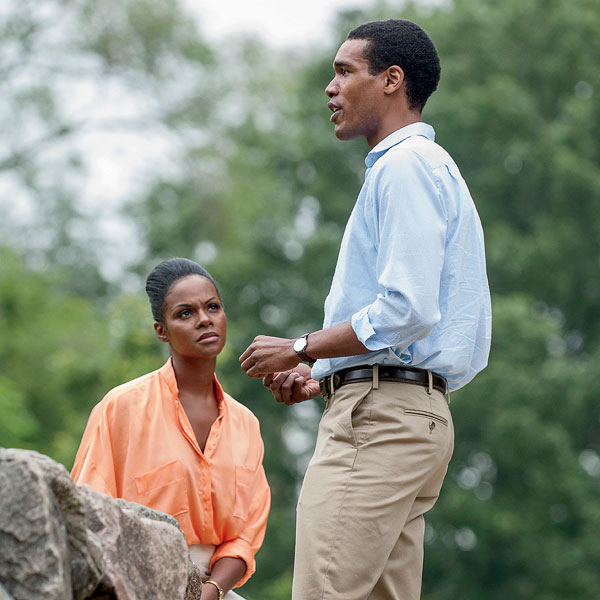
For Richard Tanne, it began with a silent exchange. As Barack and Michelle Obama rose to national prominence, the filmmaker became fascinated with “that look they give each other,” he says. “It’s a look of love and longing, and it’s rare—and even rarer in public figures.”
Intrigued, Tanne began researching the couple and found himself drawn to one particular moment in the Obamas’ lives: their first date. “What struck me about it was Michelle was not interested at first and Barack had to prove himself over the course of one day,” says Tanne. “It had the makings of a movie.”
So in 2013, Tanne decided to take a stab at a script. He spent months culling material from interviews, articles, and videos to create a fictional account of the 1989 date between 28-year-old Barack Obama and 25-year-old Michelle Robinson. The result is Southside with You, Tanne’s feature directorial debut, which opens nationally on August 26. “It’s almost like a superhero origins film about how they became this great American couple,” says one of its producers, Robert Teitel, a Chicago native whose Chicago-set films include Barbershop and Soul Food.

Though just 85 minutes, Southside leisurely presents a credible portrait of two people learning about each other, both pulling away and drawing closer as they exchange personal disclosures: Michelle living with her parents to help care for her father, who has multiple sclerosis; Barack still grappling with his resentment toward an absentee dad. If it’s unusual for a movie to follow two people just talking, it’s even more so when they’re African American. “There are far too few black romances onscreen,” says Tanne, who’s white.
Southside incorporates real-life details from that first date (Barack and Michelle catch a screening of Do the Right Thing and kiss for the first time in front of a Baskin-Robbins in Hyde Park) while taking plenty of creative liberties. Tanne couldn’t find out what the couple viewed while visiting the Art Institute, for example, so he came up with an artist he admires, Ernie Barnes, known for the paintings which appeared in the Chicago-set ’70s sitcom Good Times. And although Barack took Michelle to a community meeting during their courtship, Tanne thinks that probably didn’t happen on the first date. “But it made sense dramatically, so I put it in the movie,” says Tanne, who shot Southside last summer in just over 15 days on a budget of about $1.5 million.
It’s in that community meeting scene where the film most clearly shows the makings of Barack the politician. He entreats residents frustrated by a drawn-out battle to build a community center to set aside judgment and instead embrace empathy. “It’s an attempt at what a younger, less formed Obama might have sounded like,” says Tanne. Indeed, the united-we-stand message could have come from speeches President Obama has delivered this year.

But Tanne says any partisan reading of his film is one that viewers project onto it. “You’re going to have your own politics, and you’ll bring to the movie whatever relationship you have to the president or the first lady. Whatever you take away from it says a lot about you—it tells you what you think about the Obamas’ time in the White House,” says Tanne. “First and foremost, I wanted to tell a love story. This movie is a completely apolitical animal.”
Though Tanne insists he “really tried to stay away from any foreshadowing and any linkage to President Obama’s ideals,” the film still reads like the creation myth of the world’s most powerful political couple. And given the timing of its release during the twilight of Obama’s presidency, it’s impossible not to see the film as more than a love story. It’s also a love letter—one written to a president who promotes compassion and unity during an election cycle marked by malice and divisiveness.
Tanne thinks that reading will shift with time. “If I had sat down to write it in 2008, when I first had the idea, it would’ve been perceived as propaganda for the 2012 election,” he says. “And that leaves me with a question: Will people’s reactions to this movie change over time according to their perceptions of the president?”


